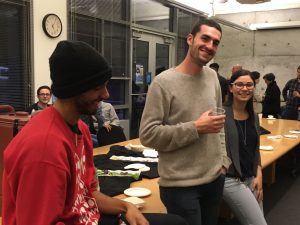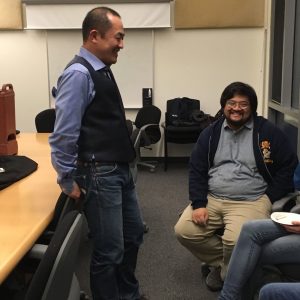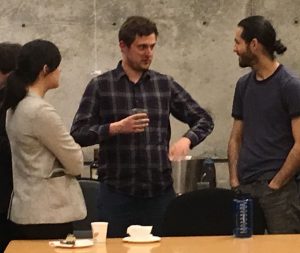HOW OUR READINGS ARE GROUPING THIS WEEK
SPLAP!: Monday, 12:20 – 1:20 pm, LCR There will be a discussion of Kadmon’s 2001 book “Formal Pragmatics”, focused on Chapters 5 and 9
LaLoCo: Tuesday, 12:00 – 1:00 pm, Stevenson 217 Continued discussion of the gensim package and examination of some Latent Semantic Analysis models created with it from the Brown corpus as well as the entire Wikipedia
LIP: Thursday, 11:00 – 12:00 pm, LCR There will be a discussion of Chen et al. (2017), a paper titled “Effect of early dialectal exposure on adult perception of phonemic vowel length”
s/lab: Thursday, 12:00 – 1:00 pm, LCR Adrian Brasoveanu will present his joint work with Jakub Dotlacil in a talk entitled “Quantitative Comparison for Generative Theories: Embedding Competence-Performance Linguistic Theories into Bayesian Models”
Phlunch: Friday, 1:30 – 2:30 pm, LCR Nick Van Handel will be leading a discussion of Wagner et al (2006), a paper titled “Formant transitions in fricative identification: The role of native fricative inventory”
S-circle: Friday, 1:20 – 2:50 pm, Stevenson 217 Line Mikkelsen (UC Berkeley) and Boris Harizanov (Stanford) will be presenting, title TBA
WLMA: Friday, 3:00 – 4:00 pm, Stevenson 217 Jason Ostrove will present his work titled “Syntactic “Ergativity” in an Active/Stative Language: The view from San Martín Peras Mixtec”


